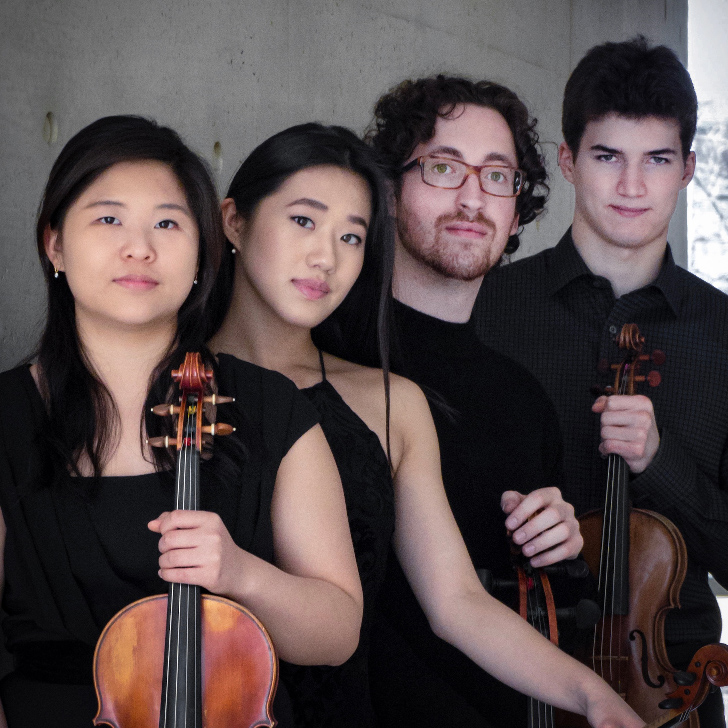by David Kulma

The astoundingly capable young quartet — violinists Beatrice Hsieh and Charles Gleason, violist Serena Hsu, and cellist Daniel Blumhard — are preparing for the Fischoff Competition this coming weekend. That explains their heavy repertoire: standard quartets by Beethoven and Bartók and a year-old work by Augusta Read Thomas.
Written for and recorded by Chicago’s Spektral Quartet, Thomas’s CHI focuses on the Chinese conception of life force and vital energy in four elaborately-titled movements. The two fast movements pass around buzzing, lightning-fast gestures, while the two slow ones take winding turns through gorgeous, static landscapes. The breathtaking gem of the set is “AURA – atmospheres, colors, vibrations,” which glistens through gorgeously combined single notes and slowly builds to vibrant chord towers. The Belka handled the new work with aplomb, showing off their own vitality and amazing precision.
Béla Bartók’s nine-decade-old Third Quartet is the most compact and dense of his six-work cycle. Here, Bartók strips his music down to its bare essentials while also stacking his ideas in extremis, demanding extreme focus and virtuosity in this continuous, four-section work. The full-bodied and weighty reading given by the Belka showed off their mastery of the complex twists and turns of this passionate yet hermetic repertoire.
The big work of the evening was Beethoven’s third Razumovsky quartet: Op. 59, No. 3 in C. The Belka were at their best in the unsettled contemplative introduction and the quicksilver finale. They brought a lightness to the soft music and vibrancy to the fast. While they clearly have the quartet in their minds and under their fingers, they generally played too heavily, as if to underline its seriousness. The lighter sections of the slow movement were intense rather than offering moments of repose. Brusque tone works in the Bartók, but Beethoven’s music requires more interpretative leeway.
But this is nit-picking. The Belka play all of this complex and lengthy music extremely well. One could have easily forgotten that these were four undergraduates rather than a professional group.
They should be successful at the Fischoff, and hopefully they will remain together through and after their trips to different prestigious graduate programs. If they choose to become a professional quartet, they clearly have the ability and sincerity to successfully make the quartet medium their home.
Published on ClevelandClassical.com May 8, 2018.
Click here for a printable copy of this article



